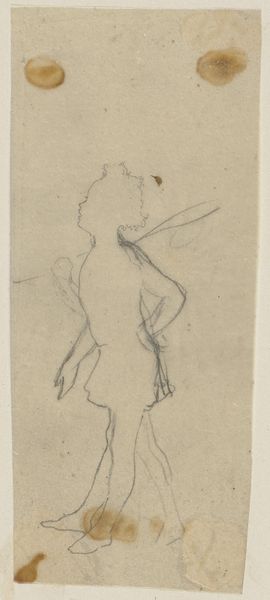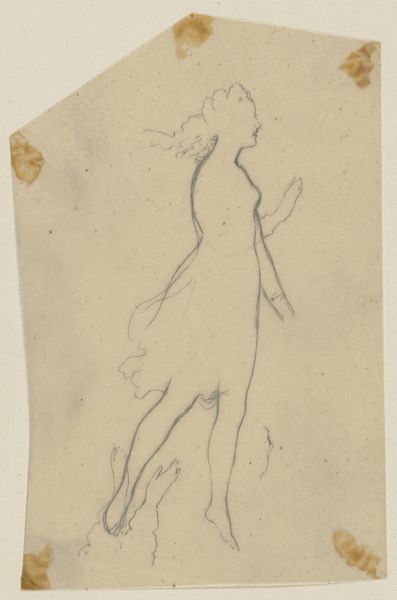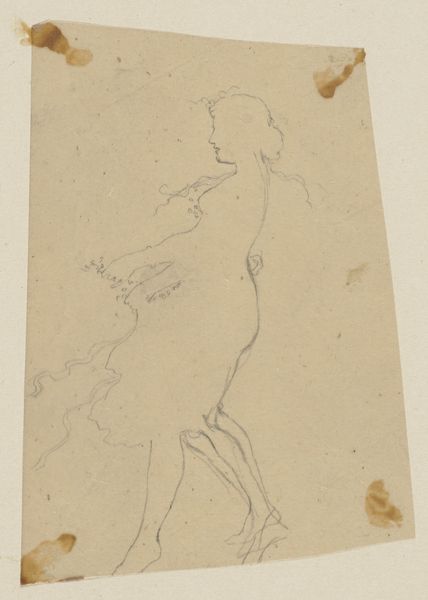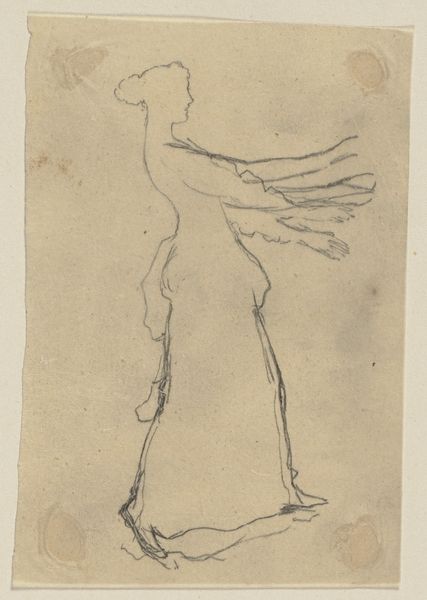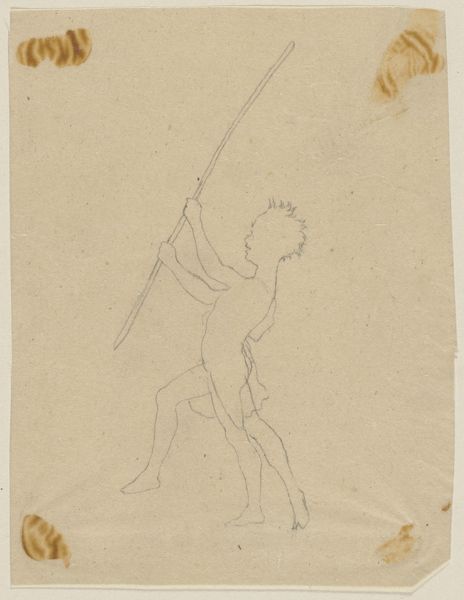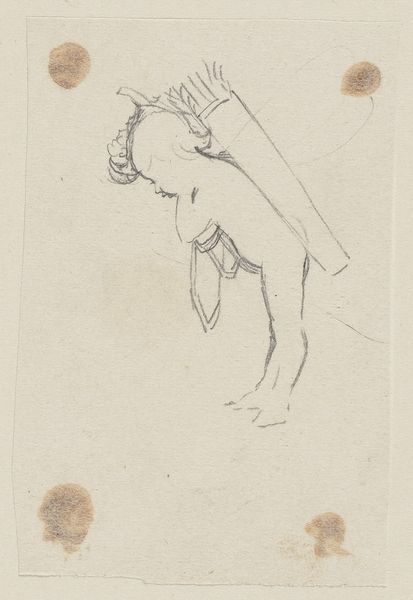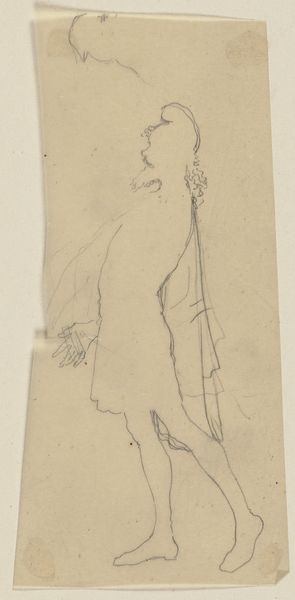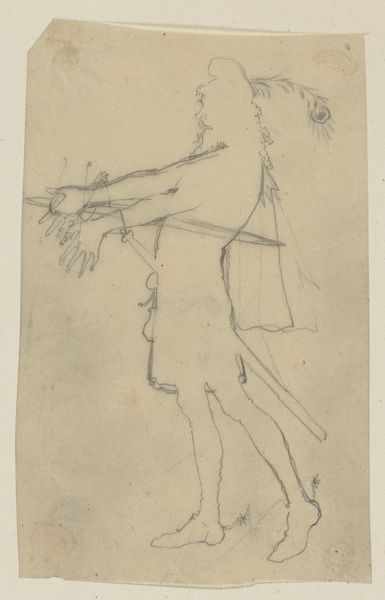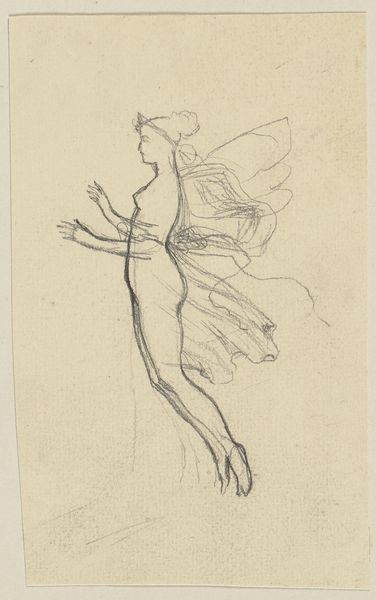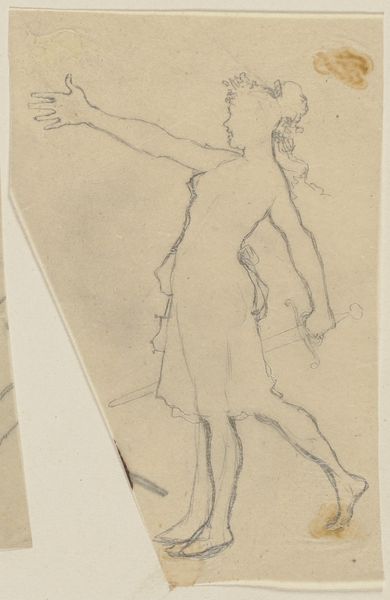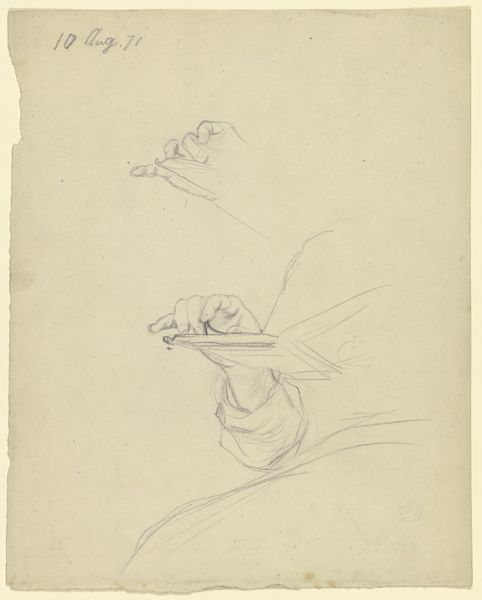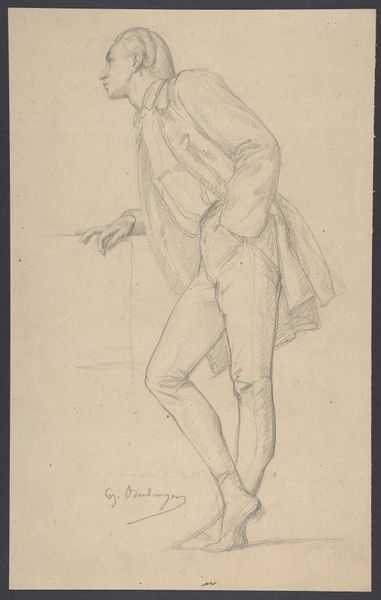
Copyright: Public Domain
Editor: This is "Titania, ein Blumenbouquet tragend, nach links," or "Titania Carrying a Bouquet of Flowers, to the Left," a pencil drawing by Paul Konewka from around 1867-1868. It's housed here at the Städel Museum. It strikes me as delicate and ethereal, almost unfinished. What can you tell me about this image? Curator: Well, this piece offers a glimpse into the socio-cultural fascinations of the late 19th century. Konewka’s Titania, referencing Shakespeare's "A Midsummer Night’s Dream", taps into the prevailing Romanticism, specifically the renewed interest in folklore and mythology. But let’s consider, who had access to art like this at the time? How did institutions display these images? Editor: I suppose only a privileged segment of society had the means to acquire or even view it. Curator: Precisely. Consider how the accessibility, or lack thereof, influences how audiences interpret Titania. Was this artwork made for private enjoyment among wealthy elites, or did it have a more public-facing aspiration through reproductions or exhibitions? These factors drastically change our understanding. How might Konewka's piece operate within a broader economy of imagery, given that we have access to it today through digital means? Editor: That's interesting. Now, seeing it online, it's stripped of its original context... Curator: Yes. The role of the Städel Museum becomes important, too. As a public institution, its curatorial choices impact the image's visibility, assigning it new meanings over time through specific displays and narratives. Do you think this display reinforces a historical viewpoint, or tries to create something new? Editor: Hmm. That makes me think about how museums shape our understanding, and I will reflect on what I learned here today! Curator: Indeed. Every display presents a fresh lens through which to re-evaluate not just the art itself but the historical frameworks we use to understand it.
Comments
No comments
Be the first to comment and join the conversation on the ultimate creative platform.
